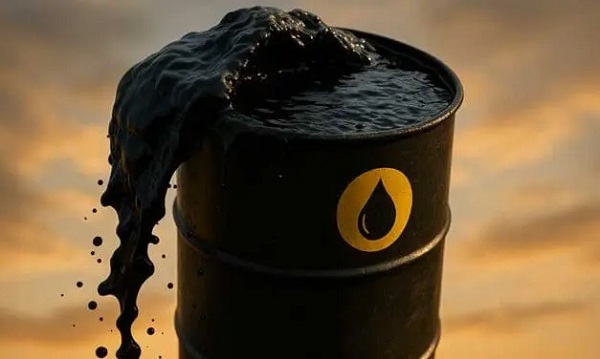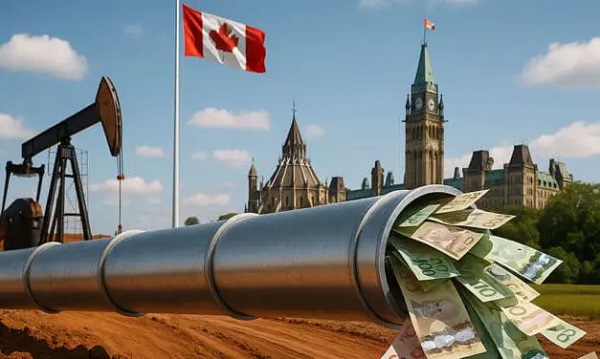Alberta
ASIRT releases findings on shooting death of armed suspect

From Alberta Serious Incident Response Team: RCMP acted reasonably in shooting fatality during arrest
On Jan. 7, 2017, ASIRT was directed to investigate the circumstances surrounding the death of a 27-year-old man during an attempted arrest by the RCMP that same day.
During a planned entry into a Stoney Nakoda First Nation residence to locate the man and two others suspected of involvement in a recent homicide, a confrontation occurred that resulted in the man being shot by an RCMP Emergency Response Team (ERT) officer.
ASIRT interviewed police and civilian witnesses, including the individuals present in the home that day and the involved officers. As well, the crime scene was examined, and photographs, radio communications and all available video were seized. ASIRT’s investigation is complete.
Having reviewed the investigation, executive director Susan Hughson, QC, concluded there were no reasonable grounds, nor reasonable suspicion, to believe a police officer committed a criminal offence.
On Jan. 7, 2017, RCMP executed several arrest warrants at residences on the Stoney Nakoda First Nation in search of three men, wanted for a murder that had occurred six days earlier. At the time, RCMP had information that the 27-year-old man had also been in possession of a firearm, which violated a court-ordered prohibition in effect until 2025. As such, the execution of the warrants was deemed to be high risk.
At approximately 4 p.m., ERT simultaneously sent teams to execute the warrants at two neighbouring homes, one being the home of the family of the 27-year-old man and his brother, also wanted in relation to the same homicide. The father of the men met the officers at the doorway to the residence. Officers located the brother inside on the first floor and arrested him without incident. As the officers proceeded further into the home, several other people were located and contained on the main level while others emerged from the basement. When asked whether anyone was still in the basement, the officers were told no.
A number of officers went down to clear the basement, announcing that they were police and that they had a warrant. As they moved along an interior wall towards a doorway in the basement, a man, later confirmed to have been the 27-year-old man, yelled at the officers to get out and leave him alone. A single shot was then fired from the opposite side of the wall, penetrating through drywall and narrowly missing the officers. The officers called out “shots fired”, returned to the main floor and, after throwing a tear gas canister into the basement, evacuated the residence.
At this point, officers were aware that they were dealing with an armed man and took up positions to contain the residence after everyone had been moved to safety. At this point, the RCMP would have had the benefit of time and resources.
One officer went towards the treeline on the west side of the residence to establish a rear sniper point. He positioned himself behind an old washing machine approximately 12 metres away from the house. While doing so, a gunshot was heard, believed to have come from the southwest corner of the basement near the basement window closest to the officer, and the officer reported hearing the sound of breaking glass.
Almost immediately, a woman climbed out of the window. As the officer yelled commands for her to walk towards him, the 27-year-old man emerged from the same basement window with a shotgun in his hands, carried at waist level and pointing in the direction of the officer and the young woman. The officer fired a single shot from his rifle, striking the 27-year-old man in the torso, causing him to collapse to the ground. Other ERT members moved in to secure the man and the shotgun, and to render emergency aid.
With the tear gas coming out of the basement window, RCMP moved the man and placed him on a jacket on the snow-covered ground to prevent hypothermia. The RCMP loaded the man into an RCMP vehicle and transported him to an ambulance waiting a short distance away, as the house and scene had not yet been cleared and confirmed safe by ERT officers. These officers re-entered the residence and found it empty.
The man was transported to a Calgary hospital where he was declared deceased. He sustained a single gunshot wound to the abdomen that injured internal organs and his spinal cord. More significantly, it cut through the main abdominal artery. This resulted in substantial hemorrhage and death. Toxicology was positive for methamphetamine.
The man’s gun, a 12-gauge tactical shotgun, was recovered loaded with three unfired shells. The pump action was in the forward firing position.
Section 25 of the Criminal Code states that a police officer is authorized to use as much force as is reasonably necessary in the execution of his or her duties. When necessary, an officer is entitled to resort to lethal force where there are, subjectively and objectively, grounds to believe that the person presents a risk of imminent bodily harm or death to the officer or another person. Lastly, an officer may use lethal force to prevent flight in limited circumstances.
The evidence is unequivocal that the 27-year-old man called out and fired upon the officers as they descended the stairs to clear the basement. The only other person in the basement was the unarmed woman who had exited the residence just ahead of the man. The woman confirmed that, although she did not see the events leading up to the officer-involved shooting, she immediately turned after the gunshot and saw officers approach the man and kick the shotgun away from the man as he laid on the ground.
Both objectively and subjectively, the man presented a risk of imminent grievous bodily harm or death to the officer, and potentially to the woman who would have been in the line of fire. The officer was lawfully placed and acting in the lawful execution of his duty. In the circumstances, the force used was both reasonable and authorized under the Criminal Code. There being no grounds to believe that an offence was committed by a police officer, no charges will be laid.
ASIRT’s mandate is to effectively, independently and objectively investigate incidents involving Alberta’s police that have resulted in serious injury or death to any person.
Alberta
Sylvan Lake high school football coach fired for criticizing gender ideology sends legal letter to school board

From LifeSiteNews
The letter on behalf of Alberta high school volunteer football coach Taylor ‘Teej’ Johannesson mentions ‘workplace harassment’ while demanding his job back.
A Sylvan Lake high school football coach who was fired for sharing his views opposing transgender ideology on social media in a video discussing his Christian faith sent a legal demand to his former school board demanding he get his job back.
H.J. Cody High School volunteer coach Taylor “Teej” Johannesson, as reported by LifeSiteNews, earlier this month was fired by his school’s principal because he spoke out against gender-confused youth who “take their hatred of Christians” to another level by committing violent acts against them.
School principal Alex Lambert fired Teej, as he is known, as a result of a TikTok video in which he speaks out against radical gender ideology and the dangers it brings.
In a recent update involving his case, local media with knowledge of Johannesson’s issues with the principal at H.J. Cody High School in Sylvan Lake, Alberta, confirmed a legal demand letter was sent to the school.
The letter reads, “From his perspective, this opposition is consistent with the Alberta government’s position and legislation prohibiting prescribing prescription hormones to minors and providing care to them that involves transition surgeries.”
In the letter, the school board’s “workplace harassment” procedure is mentioned, stating, “Any act of workplace harassment or workplace violence shall be considered unacceptable conduct whether that conduct occurs at work, on Division grounds, or at division-sponsored activities.”
The legal demand letter, which was sent to school officials last week, reads, “Given that Mr. Johannesson’s expression in the TikTok Video was not connected to his volunteer work, the principal and the division have no authority to regulate his speech and punish him by the Termination decision, which is ultra vires (“beyond the powers.)”
Johannesson has said, in speaking with local media, that his being back at work at the school as a volunteer coach has meaning: “It’s about trying to create some change within the school system.”
He noted how, for “too long,” a certain “political view, one ideology, has taken hold in the school system.”
“I’m hoping that this demand letter, and all the attention that they’ve gotten over this, causes them to make some change,” he stated.
Johannesson has contacted Alberta’s Chief of Staff for the Minister of Education about his firing and was told that there is a board meeting taking place over the demand letter.
According to Teej, Lambert used his TikTok video as an excuse to get rid of someone in the school with conservative political views and who is against her goal to place “safe space stickers” all over the school.
Teej has been in trouble before with the school administration. About three years ago, he was called in to see school officials for posting on Twitter a biological fact that “Boys have a penis. Girls have a vagina.”
Alberta’s Conservative government under Premier Danielle Smith has in place a new policy protecting female athletes from gender-confused men that has taken effect across the province.
As LifeSiteNews previously reported, the Government of Alberta is currently fighting a court order that is blocking the province’s newly passed ban on transgender surgeries and drugs for children.
Alberta also plans to ban books with sexually explicit as well as pornographic material, many of which contain LGBT and even pedophilic content, from all school libraries.
Alberta
Parents group blasts Alberta government for weakening sexually explicit school book ban

From LifeSiteNews
By
The revised rules no longer place restrictions on written descriptions of sexual content.
Some parental rights advocates have taken issue with the Conservative government of Alberta’s recent updates to a ban on sexually explicit as well as pornographic material from all school libraries, saying the new rules water down the old ones as they now allow for descriptions of extreme and graphic sexual acts in written form.
As reported by LifeSiteNews last week, Alberta Education Minister Demetrios Nicolaides of the ruling United Conservative Party (UCP) released revised rules outlining the province’s ban on sexually explicit content in school libraries.
The original ban included all forms of sexually explicit as well as pornographic material. However, after a large public school board alleged the ban applied to classic books, the government changed the rules, removing a clause for written sexual content that has some parental rights groups up in arms.
Tanya Gaw, founder of the conservative-leaning Action4Canada, noted to media that while she is happy with Premier Danielle Smith for the original book ban, she has deep concerns with the revised rules.
“We are very concerned about the decision that no longer places restrictions on written descriptions of those acts, which is problematic,” she said in an interview with The Epoch Times.
Gaw noted how kids from kindergarten to grade 12 should “never” be “exposed to graphic written details of sex acts: incest, molestation, masturbation, sexual assaults, and profane vulgar language.”
According to John Hilton-O’Brien, who serves as the executive director of Parents for Choice in Education, the new rule changes regarding written depictions “still shifts the burden onto parents to clean up what should never have been purchased in the first place.”
He did say, however, that the new “Ministerial Order finally makes catalogs public, and what we see there is troubling.”
Alberta’s revised rules state that all school library books must not contain “explicit visual depictions of a sexual act.” To make it clear, the standards in detail go over the types of images that are banned due to their explicit pornographic nature.
All Alberta schools have until October 31 to provide a list of books that will be removed under the new rules, with the ban taking effect on January 5, 2026.
As reported by LifeSiteNews in May, Smith’s UCP government went ahead with plans to ban books with sexually explicit as well as pornographic material, many of which contain LGBT and even pedophilic content, from all school libraries.
The ban was to take effect on October 1.
The UCP’s crackdown on sexual content in school libraries comes after several severely sexually explicit graphic novels were found in school libraries in Calgary and Edmonton.
The pro-LGBT books in question at multiple school locations are Gender Queer, a graphic novel by Maia Kobabe; Flamer, a graphic novel by Mike Curato; Blankets, a graphic novel by Craig Thompson; and Fun Home, a graphic novel by Alison Bechdel.
-

 Frontier Centre for Public Policy15 hours ago
Frontier Centre for Public Policy15 hours agoBloodvein Blockade Puts Public Land Rights At Risk
-

 Business1 day ago
Business1 day agoDeportations causing delays in US construction industry
-

 Business2 days ago
Business2 days agoRed tape is killing Canadian housing affordability
-

 Health2 days ago
Health2 days agoMAiD should not be a response to depression
-

 Alberta19 hours ago
Alberta19 hours agoParents group blasts Alberta government for weakening sexually explicit school book ban
-

 Crime1 day ago
Crime1 day agoCanadian teacher showed Charlie Kirk assassination video to young students, said he deserved to die
-

 International2 days ago
International2 days agoTrump to Confront Starmer Over UK Free Speech Laws During State Visit
-

 Alberta2 days ago
Alberta2 days agoAlberta updates TIER system: Businesses can direct compliance payments to on-site technologies





